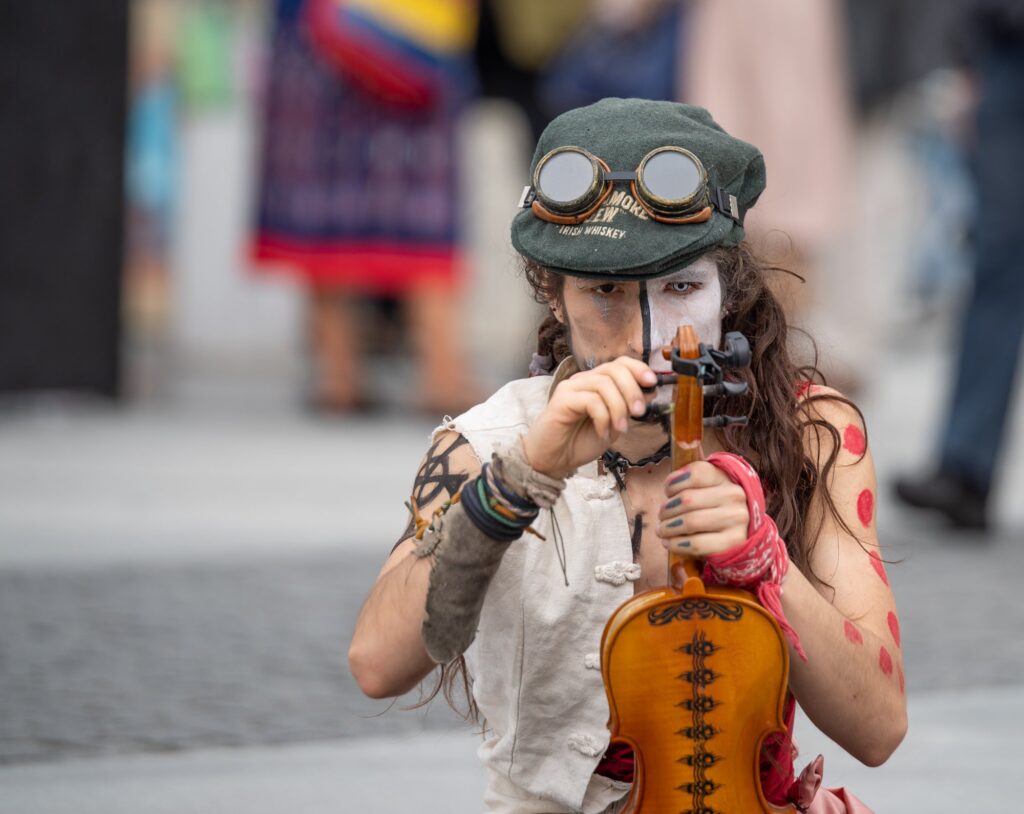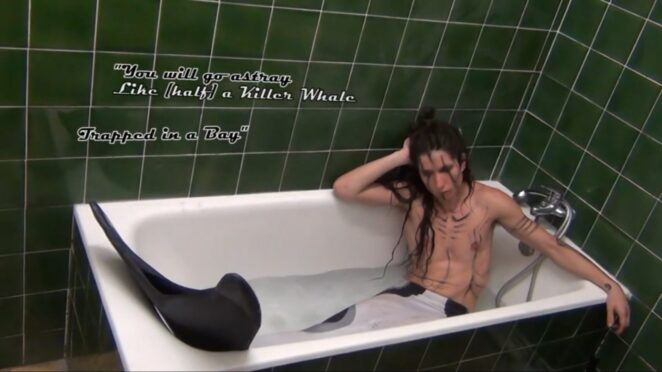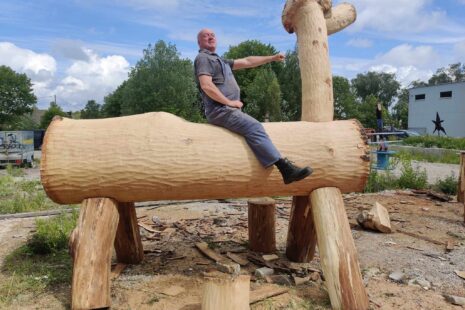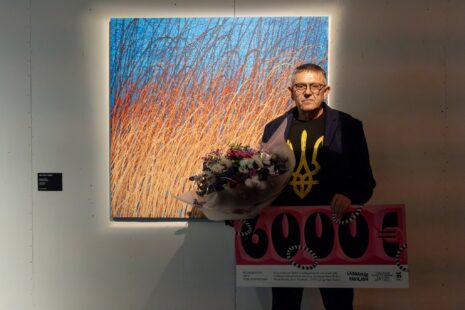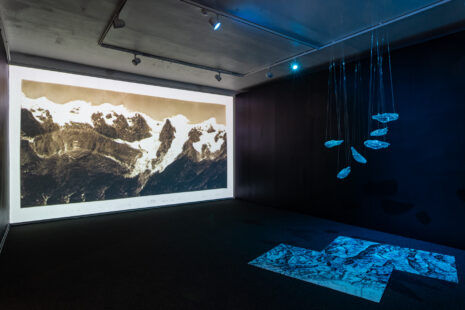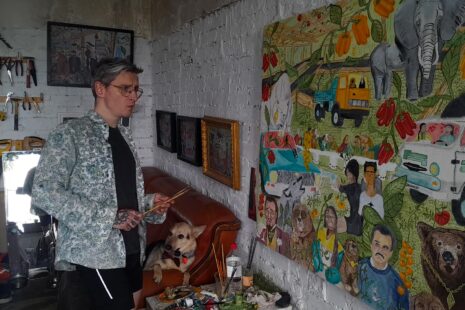In fact, even if my situation is different, I still have applications turned down because I “don’t fit with the others” as well as personal issues. I left for the countryside in Karjalohja, Finland after my Erasmus in Leipzig, Germany for cheaper rent but I felt, in addition to the Covid 19 situation, very isolated. I went through egg freezing in early spring and started hormone reassignment treatment in summer. I had to go to France for that because it seems the prosecution is very long in Finlad and I had no will to wait for ages after more than two years of unfruitful paperwork. Indeed, I am feeling artistically stuck with that gender thing when I would just like to be over puberty, at age 27, it would be high time, and move on other topics than all the variations I can find on the “self-portrait” theme. So I got embarked since one month and a half for the testosterone adventure and should be back in Finland at the end of the month.
I am currently working around body changes and some more intimate topics for a video piece which might be over in a few years.
The main line will be body changes from a female anatomy to a male one as a dancer. I might as well do something more connected to the emotional and “living in society” changes involved when finally feeling and “passing” as a man and also on how much the emotional changes made me ponder how the male/female conflict could be based on a complete disability to understand each other from a body and hormone balance point of view. We mainly have no clue of how much it matters as long as we didn’t experience one and the other physically.
One of the founders of the prize is Nordic Baltic Art Center NOBA who also organized the first Tallinn Biennial this year where you stepped up with a performance from the series “TarinaT” which refers to tale-telling. What was the story’s theme this time?
There were two stories. Each time, more than one thing is involved and an infinity of interpretations are possible. The first one, “tOtentAnz pour les vIfs”, dance of the dead for the living, was about the Corona virus and my own past year’s insecurities about death and suicide in a narrow frame and in a wider one, about how people deal with death and the fear of it. Also, it was the first time I introduced Nick Finnigan and L. Llorcaw in a story who are two characters, a male and a female one, from my fictional Sekajäte collective and TuliPanoNero folk-rock band. I was painted and dressed half-and-half to epitomize them both.
Then, each Tarina is a way to show the current stage of my trainings, so as I found out I went better to sing breathing in and out and dancing at the same time, The Kongos cover was about that. The second one “La AtarfeÑa ole kilTTi et nO comMent” was more ambivalent. The main line was the story of La Atarfeña who was a woman Toreador around 1936. I used her story, or what Frederico García Lorca told about her in an unpublished poem, in order to give an example on how our society is extremely stuck in the present and unable to put things into perspective. It ended up being the most rainy guitar song I ever played. Unfortunately it remained without video footage because of a sudden pouring rain.
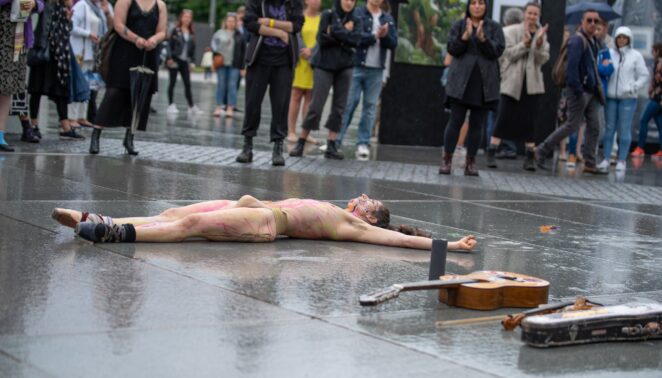
As a matter of fact, it doesn’t shock anyone to see a girl with pants though it wasn’t the case 150 years ago. Nonetheless, now, a man with a dress is still perceived as gay, queer or as a trans woman. Vegan/feminist/progressive people could see La Atarfeña as an asshole because she killed bulls for the sake of the Corrida (Bullfights) show but in her times, she could look like a progressive feminist for Corrida was a very male thing. Last but not least, it also evokes my own love-hate relationship with bullfighting because I don’t relate with it at all but can’t entirely hate it as I have been somehow raised with it from my South of France background.
In the beginning of the first performance you were shortly talking about your identity problem when suddenly interrupted by an experimental folk music band Heilung, specifically a recorded quote from their track which speaks about renewing of a soul and Valhalla, a place for fallen Vikings. Was the following dance act serving also as a ritual for you?
I feel rituals, if we go back in the first times, were the only reason and purpose of dance. Even if I would like to, I have hard time believing that after death, our souls are going somewhere else. Heaven for the good, Hell for the bad and Valhalla for the warrior who fell with glory on the battlefield. I think they needed to think they would go there to have the strength to fall for the sake of war. I think the soul doesn’t survive the body. But I wish to be wrong from all my heart.
What I find scary about death is not so much the loss of the flesh but the loss of the individuality.
Me as a being will not exist anymore. Then, I hopefully will rot underground, worms will eat my toes and the rest, and birds will eat the worms. So I will fly with the birds as a part of them. But I won’t be myself anymore. I won’t feel I do fly. So yes, that part of the story could be a ritual. To push back the fear that comes from the duality caused by the occurrence of a “soul”.
Contrariwise to most beings, humans know they are going to die. In my opinion, we are the smartest and dumbest of our kin. We know we are going to die, but we can’t fathom it is no big deal. I feel plants are wiser. I don’t know how they sense, of course, but I feel all the rest around us have more wisdom about the fact all things must come to an end at some point. As if being aware of what we are as individuals had us to lose the ability of being aware of what we are as a whole thing. Which endlessly falls and rises.
And you also had a pop-up exhibition space at ARS artfactory project room side by side with Latvian artists and their artist crisis center. To take their concept seriously or satirically is everyone’s one choice, but how did you see it personally? How did your own exposition fit there?
First of all, I loved the cookies. When I am in an exhibition, I basically work all the time, editing and setting up. Once that is done I have to train every day till my gigs are over. Even if I generally think art is too stern and should be more fun or satirical, their piece was dead serious for me. Not in a bad way but the satire was serving the raw pain of the topic. It is hard to be an artist. Meaning, to fully commit to your art. I have been homeless for some times, and many others, desperately thought I made the wrong choice and should have stuck to my languages studies. So if everyone need comfort, too many people out there think artists are just lazy prats doing a painting every now and then. Even if I wasn’t so sensitive to their aesthetics, I loved the sound piece and the food performances. Food is often despised in “spiritual” fields like art, it is either absent or reproduced, or shamelessly made inedible. So Ieva Kraule-Kūna and Elīna Vītola gained my everlasting respect for including it so nicely in an art show.
I felt my participation fit perfectly firstly because my work is in another way also talking about an artist crisis. The merman piece was about depression, the Sekajäte piece about coexisting, human nature, and gender, the “Osprey and the Hawk” painting was about the slaughter of minorities in a dystopian fantasy world, how difference is seen as a threat, and the videos about serious and less serious topics. I think art is a voice from some people to talk about human pains to other people but it has sufferings of its own. It was like I was showing parts of an artistic pain, and they were giving some options for a treatment. And lastly, a very straightforward reason. They had food, what means disposable plates and napkins and I had a waste disposal on my installation.
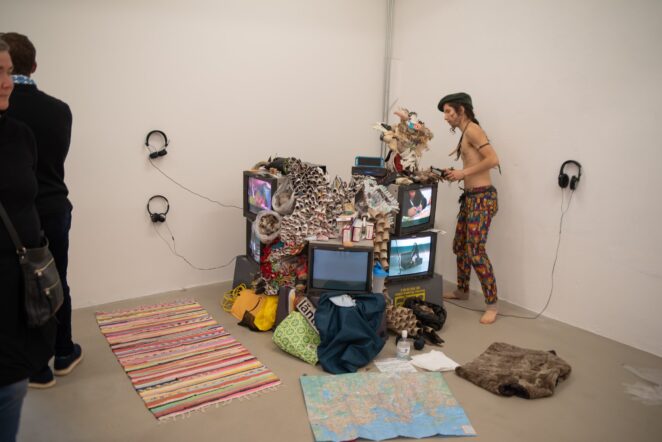
Just few months have passed since Tallinn Biennial – what kind of effect it has had for your career?
So far not much but it might have an effect later.
However, Tallinn Biennial as a goal led me to finish the tail I started one sad morning in order to make a piece about my wish to be a merman.
This summer, I got offered a participation to a video work by Marianne Savallampi around non-stereotypical merfolk which should be shown as part of the Gathering for Rehearsing Hospitalities contemporary art festival taking place in Helsinki during September 2020. Unfortunately, it was impossible for me to be in Finland for the recording day as I was waiting for hormone treatment paperwork to be processed. So I got another tail and recorded myself to be part of the video work anyway and I discovered if I don’t manage to make it as an artist, I can try my luck as a merman.
And coming back to your last year’s interview once more – you hoped that in two years you will be better with ballet shoes, guitar and violin. Are there any examples you would like to share with us so we can see how you do?
As my voice is changing because of hormone replacement therapy I have to rethink entirely the way I sing and to get used to a voice which isn’t settled and won’t be before some years, so it helped my progress from being as linear as wished. Nevertheless, I trained to play the violin without the shoulder rest which allowed me to have a better position for singing while playing – like the Alice Cooper cover I did for the NBYAA award tarina “Kilven aikA”. One good thing with my voice being temporarily broken is that I am working more than ever on widening my guitar chords repertoire which is still quite very narrow for now. Unfortunately the evidence I got better with ballet shoes has been lost in the rain at Freedom square in Tallinn. I am now taking online ballet classes with Vincent Laine, whose teaching I really recommend to anyone who has an interest in dance in general and ballet in particular around Helsinki and beyond.
There isn’t any published videos about my current level. I made one in the frame of my gender reassignment where I dance for the first time entirely naked and would like to do a similar one in a few years to see how my body changed but nothing is public yet. My last video, Un[Fit] “Like [half] a killer whale trapped in a bay” (click on the picture below to see it), has not much dance in it but stronger feet may prove useful when swimming with a tail. To conclude, I reached a point with the growing multiplicity of my trainings where I can’t be as good as I wished with everything I do. I would have either to sacrifice some to deepen others or to accept my strength might lie in multidisciplinarity. Toes and piano skills have been improving because it is summer and my aunt has a piano but my high-pitched singing and left-hand apprenticeship decreased a bit.
When it lowers my moods I try to remember a sentence from Alivia d’Andrea “rest, don’t quit”. I have a lazy day and then, back on track.
Photos: Ivar Hütt

